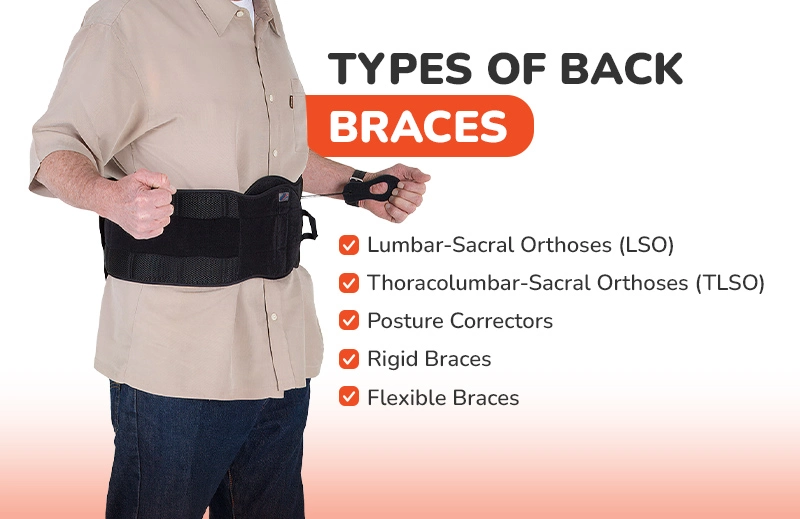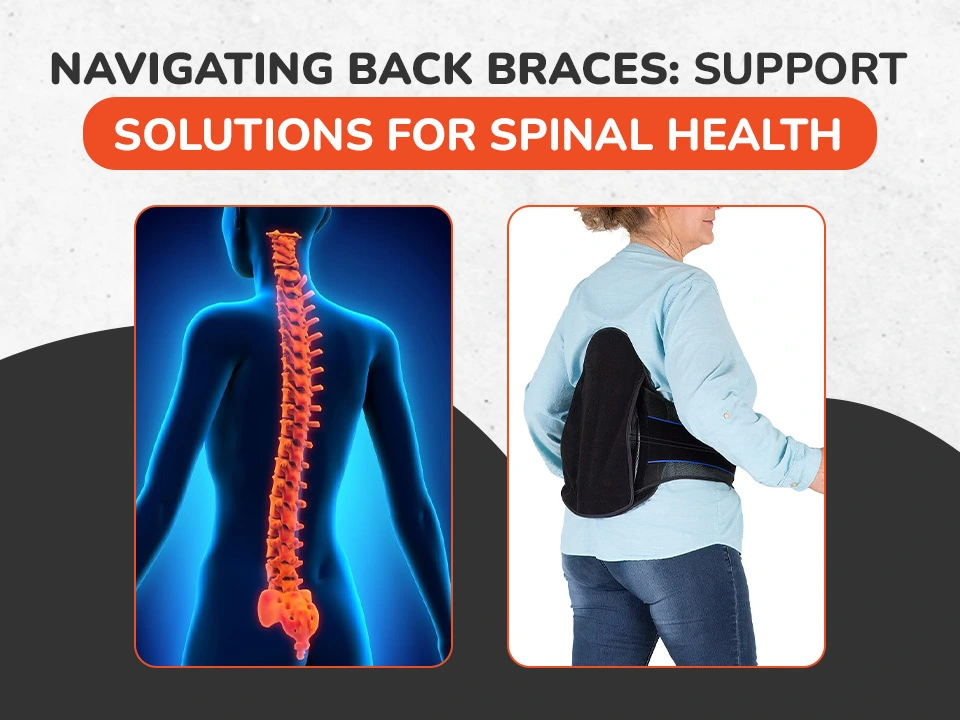Navigating Back Braces: Support Solutions for Spinal Health
In a world where our daily routines often lead to poor posture, repetitive strain, and inevitable back pain, finding effective solutions for spinal health has never been more crucial. Back braces stand out as a beacon of support and relief in this quest, designed to uphold the integrity of our spine while we navigate the demands of work, fitness, and life in general. This educational exploration delves into how back braces are foundational to maintaining and enhancing spinal health. From offering immediate pain relief to correcting long-standing postural issues, back braces embody a versatile approach to spinal care. Whether you’re recovering from an injury, looking to prevent future spinal issues, or seeking to improve Your overall posture and understanding of the role and benefits of back braces are steps towards achieving a healthier, more comfortable life. Join us as we navigate the ins and outs of back braces, unveiling the support solutions that promise a stronger, more resilient backbone for your daily activities and beyond.
Introduction to Back Braces
In personal health and wellness, back braces have carved out a significant niche as vital allies in the quest for spinal integrity and comfort. These devices are ingeniously designed to envelop the spine in a supportive embrace. They offer a trifecta of hard-to-overlook benefits: they stabilize the spinal column, alleviate back pain, and work tirelessly to correct and improve posture. The essence of a back brace lies in its ability to act as a physical scaffold for the spine, reinforcing the muscles and ligaments that encase it, thereby mitigating the risk of further injury and discomfort. Whether utilized as a component of a comprehensive treatment plan for those recuperating from spinal injuries or as a preventive measure by individuals keen on maintaining their spinal health, back braces are a testament to the innovation in non-invasive spinal care solutions. Their versatility and effectiveness make them indispensable for anyone facing back pain or posture issues, signaling a step forward in managing and overcoming spinal health obstacles.
The Importance of Spinal Health
The spine’s role in our body cannot be overstated—it is, quite literally, the pillar upon which our physical structure is built. It is responsible for supporting our body’s weight, enabling a wide range of movements, and housing the spinal cord, which carries messages between the brain and the rest of the body. Given its central role, the spine’s health is paramount to our overall physical well-being, influencing everything from our ability to perform daily tasks to our capacity for engaging in physical activity. Yet, despite its importance, spinal health is often overlooked until pain or mobility issues surface, forcing us to confront the neglect of this vital body part.
The advent of back braces as a tool in the arsenal against back pain and dysfunction marks a pivotal shift in how we approach spinal care. These devices are not merely about offering temporary relief; they represent a proactive approach to nurturing and protecting our spinal health. Back braces serve as valuable partners in the journey toward a healthier back by providing support where it’s needed, reducing undue strain, and encouraging proper posture. They stand as a beacon for those looking to enhance their quality of life through improved spinal health, embodying the intersection of care, support, and prevention in the ongoing dialogue about back wellness.
Types of Back Braces
Delving deeper into the world of back braces reveals a spectrum of designs, each tailored to address specific spinal health needs, from mild discomfort and posture correction to recovery from serious spinal surgeries. Here’s a more detailed look at the types of back braces available:

- Lumbar-Sacral Orthoses (LSO): These braces focus on the lumbar (lower back) and sacral areas of the spine, regions commonly afflicted with pain and instability. LSO braces are engineered to wrap around the lower torso, providing a supportive embrace that alleviates pressure on the lumbar spine. They’re especially beneficial for individuals suffering from chronic lower back pain, herniated discs, or sciatica, offering a reprieve that can significantly enhance daily comfort and mobility.
- Thoracolumbar-Sacral Orthoses (TLSO): TLSO braces offer comprehensive support, extending from the thoracic (mid-back) region through the lumbar down to the sacral spine. This extensive coverage is designed for more severe spinal conditions, such as fractures, post-surgical recovery, or severe spinal deformities. By encompassing a larger area of the back, TLSO braces ensure a higher degree of stabilization, which is crucial for the healing and protection of the spine in more critical conditions.
- Posture Correctors: In the age of screen-dominated environments, posture correctors have become increasingly popular. These braces are less about addressing severe spinal issues and more about realigning the spine to its natural posture. They work by gently pulling the shoulders back to reduce slouching, relieving the strain on the back muscles and spine caused by poor posture. Regular use of posture correctors can lead to long-term posture improvements and a noticeable reduction in back discomfort.
- Rigid Braces: Rigid braces are the heavy-duty members of the back brace family, providing the maximum support possible. Constructed from sturdy materials, these braces are typically prescribed following surgery or for significant spinal injuries where immobilization of the spine is necessary. Their robust structure helps to ensure the spine remains in a fixed position, aiding in the healing process by preventing movements that could jeopardize recovery.
- Flexible Braces: For those with chronic back pain or minor injuries, flexible braces balance support and mobility. Made from materials that allow for a range of motion, these braces still provide sufficient support to the lower back, helping to manage pain and prevent further injury. Their flexibility makes them ideal for everyday use, ensuring individuals can go about their daily activities with an added layer of support.
Benefits of Wearing Back Braces

- Pain Relief: The primary benefit that draws many to back braces is their significant pain relief. By stabilizing the spine and distributing pressure more evenly, these braces can provide immediate relief from chronic and acute back pain, making them an essential tool for pain management.
- Improved Posture: Continuous use of posture correctors or even general back braces can lead to significant improvements in posture. By encouraging the spine to align in its Natural curvature and reduce the tendency to slouch, These braces can help rectify posture-related issues, leading to reduced strain and a healthier back over time.
- Injury Prevention: For individuals who engage in heavy lifting or high-risk activities, back braces are a preventive measure against potential back injuries. They provide the necessary support to keep the spine aligned and reduce the risk of strains or sprains during physical exertion.
- Support During Recovery: Recovering from back surgery or injuries requires additional support to ensure the spine heals correctly. Back braces are indispensable during this phase, offering the stabilization needed to prevent movements that could disrupt the healing process.
- Enhanced Mobility: With the pain alleviated and the spine properly supported, individuals often experience a significant improvement in their mobility. Back braces can help restore the ability to perform daily activities and enjoy a better quality of life, free from the limitations imposed by back pain.
Choosing the Right Back Brace
Embarking on the journey to select the ideal back brace is a task that demands attention to detail and an understanding of one’s personal health needs. The process is nuanced, involving a careful assessment of the specific back issues, whether they stem from chronic conditions, acute injuries, or the desire for preventative care. The level of support necessary varies widely among individuals, with factors such as pain intensity, the specific area of the back affected, and daily activity levels playing crucial roles in the decision-making process.
Consulting with a healthcare professional is not just recommended; it’s a critical step in ensuring that the back brace chosen aligns with the medical advice and rehabilitation plan prescribed. These professionals can provide invaluable insight into the type of brace that will offer the most effective support and relief based on the diagnosis and treatment goals.
Comfort is another cornerstone of selecting the right back brace. A brace that fits well will be more effective in providing support and encourage consistent use, which is key to achieving the desired outcomes. It’s essential to try on different styles and sizes, if possible, to find a brace that fits snugly without causing discomfort or restricting movement unnecessarily.
Read More: Managing Lower Back Pain with Back Braces: Tips and Techniques
How to Wear Back Braces Correctly
The benefits of a back brace are maximized only when worn correctly. Achieving the right fit involves more than just putting the brace on; it requires adjusting it to the contours of your body, ensuring that the level of compression and support is neither too loose to be ineffective nor so tight as to impede circulation or cause discomfort.
Following the manufacturer’s instructions for wearing and adjusting the brace is fundamental. These guidelines are designed to help users find the optimal fit and educate them on adjusting the brace based on changes in swelling or pain levels. It’s also advisable to wear a thin layer of clothing under the brace to protect the skin and enhance comfort.
Caring for Your Back Brace
The longevity and effectiveness of a back brace significantly depend on how well it is cared for. Regular cleaning, as specified by the manufacturer’s instructions, is vital to maintain hygiene and prevent the buildup of sweat and bacteria. Most braces will require air drying, a method that preserves the integrity of the materials and prevents damage that could compromise the brace’s supportive features.
Routine inspections for signs of wear and tear are equally important. Over time, braces can stretch out, fastenings can become less secure, and materials may degrade, reducing the brace’s effectiveness. Early detection of these issues can prompt timely replacements or adjustments, ensuring continuous support.
Back Braces for an Active Lifestyle
Integrating a back brace into daily life doesn’t mean sacrificing activity for comfort; rather, it enables a balance between the two. A well-chosen back brace supports engagement in daily activities, work, and hobbies with reduced pain and increased confidence. It acts as a silent partner, ensuring that pursuing an active lifestyle doesn’t come at the expense of spinal health.
Conclusion
The role of back braces in managing and preventing back pain and spinal issues is undeniable. With many options available, understanding the types, benefits, and correct usage of back braces is paramount. The journey towards a healthier spine, enhanced mobility, and a pain-free existence is made possible with the right back brace tailored to individual needs and lifestyles. Remember, the guidance of a healthcare provider is invaluable in navigating this path, ensuring that the back brace serves as a bridge to greater health and activity, not a barrier.

